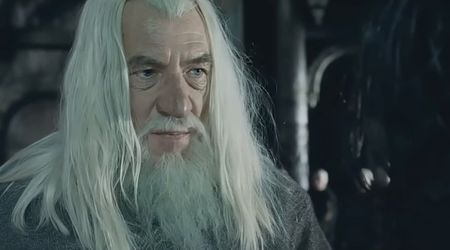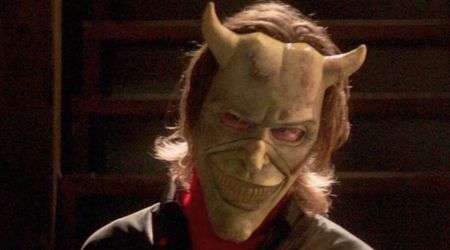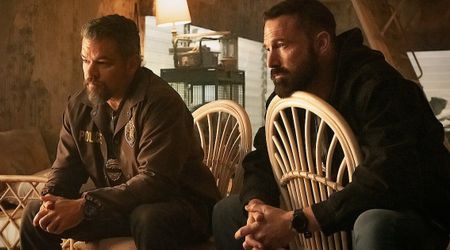'Ella Fitzgerald: Just One of Those Things': How an orphaned Black teen faced racism to become the 'Queen of Jazz'

'Ella Fitzgerald: Just One of Those Things' is a documentary film directed by Leslie Woodhead that documents the life of the 'Queen of Jazz' from her 1934 debut at one of the earliest Amateur Nights at the Apollo Theater in Harlem all through her five decades as one of the most prominent jazz singers of her time.
Contrary to the razzmatazz that is more commonly associated with the life of a jazz superstar, Fitzgerald's life was hardly smooth sailing. Coming from a poor, abusive background that forced her to run away from home and live her life out on the streets of Harlem, Fitzgerald's youth was one that teetered on the brink of a life in crime. She soon found herself in the company of bordellos and the mafia, making a living off singing and dancing in the streets. When she finally found the chance at a big break at the Apollo, she was all set to perform a dance number and become the star she was born to be. That was, of course, until the tap-dancing Edwards Sisters took to the stage right before Fitzgerald and caused her to lose her nerve. So instead, she decided to sing and this choice would set Fitzgerald on the path to becoming one of the greatest singers of all time.

One of the prizes for winning the Amateur Night was the chance to perform at the Apollo for a week. Fitzgerald was denied her prize, however, owing to her disheveled appearance. Norma Miller, the 'Queen of Swing', recalls in one of the interviews in 'Ella Fitzgerald: Just One of Those Things'that she, along with the rest of the crowd, jeered and booed at the young Fitzgerald's messy appearance, but the moment she opened her mouth, as Miller puts it, "She shut us up so quick you could hear a rat piss on cotton." Not long after, Fitzgerald became a part of Chick Webb Orchestra, but this wasn't without struggle either, as Webb was initially against letting her in. Yet, Fitzgerald persevered and she not only established herself as the featured singer for the band, but she also went on to be mentored by Webb and eventually took over the role of bandleader from him following his untimely passing. While her first big hit was recorded when Fitzgerald was only 19, her solo career only became a reality in 1942.
In addition to interviews with the likes of Smokey Robinson and Tony Bennett as well as Fitzgerald's son and musician Ray Brown Jr., 'Ella Fitzgerald: Just One of Those Things' also features archival footage including some stunning shots of the streets and stages of New York. Charting the course of Fitzgerald's life and career, the film takes us through the Harlem Renaissance (a socio-cultural movement that saw the rise of some of the greatest black artists of the 1910s through to the 1930s owing to the Harlem neighborhood developing into a cultural hub for black people that birthed a golden age for African American culture), the Great Depression, the era of swing which spanned the '30s and '40s and saw the rise of jazz bands and improvisational styles of singing both of which became Fitzgerald's trademarks, and World War II, with each major event backdropping Fitzgerald's own rise to fame and the struggles she endured as a black woman trying to navigate economic and political unrest as well as social and cultural shifts.

And while Fitzgerald's lasting legacy will always be rooted in her talent, what this film establishes is that it was her own tenacity and unwillingness to give up that really helped her pave her own way. Music was how Fitzgerald escaped her abusive past, but even within the industry, she faced abuse, particularly in the forms of racism, misogyny, and fat-shaming, including being called 'the plump chanteuse' on account of her not fitting neatly within the confines of what was deemed 'attractive'. But Fitzgerald, once again, persevered and established herself as being as worthy of the stage as her contemporaries. And in doing so, she also managed to inspire a whole new generation of artists who both looked and sounded, as British singer-songwriter and composer Laura Mvula puts it, like "a Black woman that was really Black."
In the modern era, one might call Fitzgerald's stance as being unapologetically black. But in this film, we see it was so much more. Her very existence and the space she dared to take up in the industry and beyond was revolutionary. As Miller points out: "Everything was race." Segregation was practiced openly even during the prime of genres like jazz, despite so many of these styles being helmed by black artists. They were free to perform on stages but were never allowed to attend the same venues as customers. They could share their gifts with the world, so long as they dared not mix with white society. And it was the firm stance of white allies that was often required to help break these barriers down.

In Fitzgerald's case, it was people like Marilyn Monroe who helped her secure gigs at places like the Mocambo, while Fitzgerald's own home in the Beverly Hills had to be purchased in the name of Norman Ganz, her white manager who founded Verve, the label that would propel Fitzgerald to new heights all while she endured Ganz's controlling nature and seemingly unwanted advances. In a 1963 radio interview, she speaks candidly about her reality as a Black woman. The singer was not known to be vocal about racism in the US, which made this an extremely rare moment of honesty from her. She described her "embarrassment" at the racial apartheid happening in her country, calling the prejudice "pitiful." The interview, however, was never broadcast.
These aspects of the film might be the ones that most viewers might find themselves drawn to. After all, much is known of Fitzgerald's unmatchable skill and success, but not as much is known of her struggles with racism and misogyny. But the film tends to touch more briefly on these points, including a brief hint at her divorce from Ray Brown told via her gut-wrenching performance of 'A House Is Not a Home'. However, the film focuses on Fitzgerald the jazz singer, and this is most likely a conscious choice considering Fitzgerald herself rarely focused on much else besides her work. But additionally, unlike the way so many famous stories play out, Fitzgerald's personal life was largely without controversy. To that end, fans of the icon might not find a wealth of new information here. Instead, this film serves as more of a nostalgic walk down memory lane, reliving some of Fitzgerald's greatest triumphs and getting to witness her rise to the top through history-making moments and anecdotal tales told by her family, friends, and colleagues. But for those who haven't followed her story, there might be several bits of new information ranging from her troubled youth to her resilience in the face of segregation to the highlights of her career and her impeccable skill as a jazz artist.
Regardless of which camp you fall into, however, the one thing this film makes abundantly clear is that Fitzgerald had a one-in-a-million kind of gift, the sheer power of which cut through prejudice and allowed the singer to chart a course straight to the top. And while she may have had a helping hand from her white colleagues and friends, ultimately, her talent is what pushed the boundaries of what Fitzgerald, as a Black woman, was able to accomplish in a world that wasn't ready for her. The movie closes out with Fitzgerald's glorious voice serenading us as we learn that the singer's end was marked by failing health that led to her legs being amputated. Following her final performance in 1993, Fitzgerald would pass away aged 79 three years later, leaving behind half a century's worth of music for the world to be enamored by decades later.
'Ella Fitzgerald: Just One of Those Things', is set to play in virtual theatres from June 26 through July 10.










